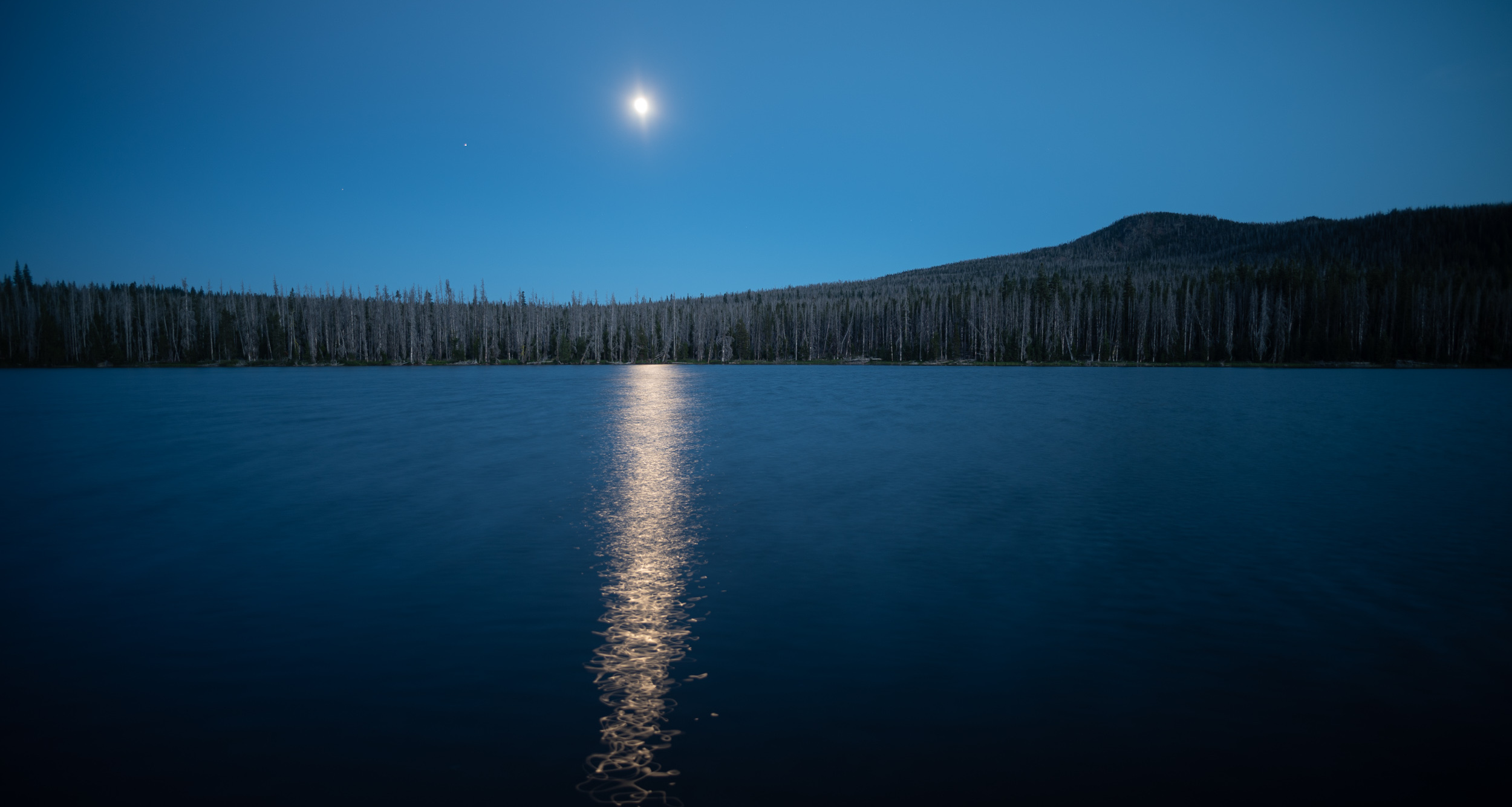
by DGR News Service | Aug 20, 2020 | Biodiversity & Habitat Destruction, Climate Change
This is the first in a series of articles reflecting on a recent study which predicts collapse of industrial society within a few decades. By destroying the ecological foundation on which all life depends, civilization makes collapse inevitable. Max Wilbert describes the destruction caused by the industrial civilization, and what we can do for a just transition to a more sustainable way of life.
by Max Wilbert
A new study published in Scientific Reports finds that there is a 90% chance of civilization collapsing irreversibly within the next 20 to 40 years.
The report, published on May 6th by Dr. Gerardo Aquino, a research associate at the Alan Turing Institute in London, and Professor Mauro Bologna of the Depratment of Electronic Engineering at the University of Tarapacá in Chile, uses statistical and logistical modeling to look at destruction of the planet, and specifically focuses on deforestation and population growth.
By plugging in statistics and trends in resource consumption and running thousands of model-runs with different assumptions, Aquio and Bologna predict the most likely course of future human society.
The researchers conclude that civilization has a “very low probability, less than 10% in the optimistic estimate, to survive without facing a catastrophic collapse.”
This should not be a surprise. The form of social organization we call civilization (a way of life based on the growth of cities) began around 10,000 years ago, and since then this form of society has reduced the number of trees around the world by at least 46 percent—and those who do remain are, on average, much smaller and younger. At current rates of deforestation, nearly every tree on the planet will be gone within the next 100-200 years.
On top of this, civilization (and it’s modern form, industrial civilization) is causing a global mass extinction event, changing the composition of the atmosphere and instigating global climate change, polluting the highest mountains and deepest ocean trenches with industrial chemicals and plastics, desertifying and eroding vast portions of the planet’s soils via agriculture, and fragmenting and shattering what habitat does remain intact via networks of roads and urbanization.
Most people perceive collapse as a terrible thing, and indeed a global collapse will result in a great deal of suffering, disease, and death. But the reality is, a vast amount of suffering is happening now, caused by the continued functioning of industrial civilization. A full forty percent of all human deaths are caused by air, water, and soil pollution according to Cornell research. The CoViD-19 pandemic is a direct result of civilization and the destruction of forests.
On top of this, collapse at this point may be inevitable. As the book Deep Green Resistance explains, “We are in overshoot as a species. A significant portion of the people now alive may have to die before we are back under carrying capacity, and that disparity is growing. Every day carrying capacity is driven down by hundreds of thousands of humans, and every day the human population increases by more than 200,000. The people added to the overshoot each day are needless, pointless deaths. Delaying collapse, they argue, is itself a form of mass murder.”
If you are concerned about this, as I am, as we all should be, you should be working to relocalize food production and smooth the transition away from industrial agriculture. Collapse has both positive aspects (declines in pollution, reduction in logging, end of international shipping, reduction in energy consumption, etc.) and negative aspects (collapse of social structures, medical systems, increased demands on local forests, etc.). These need to be managed and prepared for.
In the long-term, collapse will benefit both humans and nature by stopping industrial civilization and its pollution, global warming, desertification, and so on. Another physicist, Tim Garrett from the University of Utah, has conducted research into global warming and concluded that “only complete economic collapse will prevent runaway global climate change.”
There are over 400 oceanic dead zones created by fertilizer and nutrient runoff from industrial farms. Only one has recovered: the dead zone in the Black Sea, which healed after the collapse of the Soviet Union and the crash of industrial farming in the area. The area is now home to healthy wildlife and fish populations which support a stronger local economy.
Ultimately, our health and success as human beings is inseparable from the health of the planet. To destroy the Earth for temporary enrichment a slow form of suicide. But deeper than that, it is matricide, patricide, fratricide. It is the murder of one’s own family. We will only thrive when the natural world, our kin, are thriving as well. Human beings are not doomed to destroy the planet. We can live in other ways, and indeed, that is our only hope.
Featured image by the author.
Our next piece will discuss how a Dyson sphere (one of the proposed “solutions” in the original article) will not save us from a collapse.

by DGR News Service | Aug 16, 2020 | Repression at Home, White Supremacy
This article by Vince Emanuele was originally published by Counterpunch on July 28 2020. Vince offers analysis on the issue of power, shootings, organizing, and the need to articulate a comprehensive list of demands to ease inequity.
Winning Requires Vision, Strategy, and Numbers
By Vince Emanuele / Counterpunch
“An incorrect power analysis can lead people who want to end capitalism to think that small numbers of demonstrators occupying public spaces like parks and squares and tweeting about it will generate enough power to bring down Wall Street.”
― Jane F. McAlevey on winning.
Winning is the primary task of any political organizing effort. Generally speaking, in order to win, people must change the power dynamic between elites and the rest of us.
Right now, ordinary people have very little actual power, but plenty of potential power. Elites hold institutional power, but their power is unstable, based on coercion, and requires our cooperation and participation.
Questions concerning tactics should always be tied to strategy. And strategy should always be tied to vision. First, vision. Second, strategy. Third, tactics. Many leftwing movements throughout the past two decades (antiwar, environmental, Occupy, BLM) started with tactics, then moved to strategy, and still lack a coherent vision. Movements today are making the same mistake.
Eight weeks ago, mass uprisings exploded across the U.S.
They were organic and fueled by righteous anger. Stores were looted. Police stations burnt to the ground. Most importantly, the uprisings included millions of people who don’t self-identify as organizers, activists, or radicals.
Today, the protests have largely died down, except for Portland and a few smaller scale actions taking place throughout the U.S. The goal, however, should be to increase participation. Without a broader political vision, which has yet to be articulated in any coherent or collective manner (here, I don’t solely blame BLM–this has been a fundamental problem with most left mobilizing efforts over the past 25 years), any future actions will have limited success.
This is already the case as many towns, cities, and states have stopped talking about how to reform police departments, and instead have switched their focus to mitigating the pandemic. To be clear, calls to ‘defund’ or ‘abolish’ the police is not a vision. It may be part of a broader political vision, but it’s definitely not an all-encompassing vision, or one that addresses the many challenges ordinary people face. Obviously, the current rebellions are not strong enough to seize, take, or create alternative forms of power, and even if they were, what the hell would we do with our newfound power?
I guess this gets back to the question: does the left actually want power?
Not the power to impose dictate and rule over the people, but the power to democratically make decisions? Some of my friends on the left have openly said, “I like being on the outside, agitating and causing problems.” But “agitating” and “causing problems” isn’t revolutionary, at least not in my view. If what we seek is revolution, it seems clear to me that we need a vision for what a new society could or should look like.
The current wave of protests includes democratic socialists, indigenous groups, communists, anarchists, non-affiliated leftists, first time protesters (including many teenagers), progressives, even some liberals. To be clear, I’m not suggesting that everyone in the streets should identify as one politically and ideologically homogeneous group, but there’s not even broad agreement on fundamental questions concerning the state, economy, ecology, or democracy.
On a small scale, the people currently marching in the streets have yet to articulate what, exactly, ‘defunding the police’ looks like, or what, exactly, the funds redirected from the police should go towards (and that’s assuming we could mount campaigns powerful and strategic enough to make sure defunding occurs), let alone what the movement would do if it actually had the power to collectively make decisions and reshape society.
Take Chicago, for instance, a city that’s 30% black (also the most segregated city in the nation). Not one reform has been announced in the third largest city in the U.S., a city plagued for over a century by corrupt policing (one of the most corrupt police departments in history). Yet, the left gathers 1,000 people for a rally at the Christopher Columbus statue in Grant Park to intentionally engage in skirmishes with the police (eventually, the city took down the statue). Yes, take down the statues, but let’s not confuse political theater and symbolic actions for political vision and strategic purpose.
Filmmaker, organizer, former marine, and native Ukrainian, Sergio Kochergin puts it well:
This is the 4th time in my life that I see statues being toppled. The first time it was during the collapse of the Soviet Union. After the statues were toppled, these countries were raped economically, socially and culturally by the neoliberal system. The inability of close-knit communities to organize and develop a vision for a new society turned into another exploitative playground for the elites. The second time was In 2003, when I personally saw statues of Saddam Hussein toppled in Iraq. The country was thrown into a civil war (U.S. and U.K. imposed genocide), resources were privatized, masses imprisoned, abused, and exploited. The country is still recovering from decades of war and a caliphate created by the U.S.-U.K. invasion. Elites in Iraq have made out like bandits, enjoying billions of dollars worth of contracts and extracted oil revenues, while the people of Iraq suffer and protest in the streets, demanding security, food, healthcare and peace. In 2015, I saw statues being toppled after the popular uprisings in Ukraine. The movements on the ground did not have a collective vision. As a result, the country completely opened its doors to more capitalist predators, putting up 60% of all agricultural land for sale to the highest bidder, unleashing an onslaught of murders and attacks on small-scale farmers. Also, the passing of the E.U. visa mandate, replacing low-skilled workers in E.U. countries who migrated west to England, Netherlands, and Germany with high-skilled Ukrainians performing low-wage, low-skill jobs in countries like Poland, Czech Republic, etc. And finally, In 2020, in the U.S. people are toppling statues while the economy slumps into a dark hole, unemployment benefits are running out, people are getting evicted, and we are still waging wars around the world. With a continuous assault on our educational system most people don’t know our history anyhow, so whether statues stand or fall, those who don’t know the history are likely to repeat it. And without a vision, what are we doing? I am not bashing the toppling of the statues or trying to ignore the violent history these statues might entail. I am critiquing the lack of understanding about the most important issues we are facing: capitalism, low wages, lack of healthcare, lack of affordable housing, climate change, and militarism. Our lack of vision creates a lack of participation. Creating truly revolutionary movements requires dedication and discipline. Romanticizing violence and disorder is an easy way out.
Toppling statues and engaging in street skirmishes with the police may give the impression of a radical political movement, but such actions are nothing more than a sort of revolutionary simulacra. Turning our actions into truly revolutionary acts requires behind the scenes work–the sort of work that’s not sexy: one-on-one conversations, meetings, reading, studying, planning, strategizing, and the like. Our most effective weapons are not our bats, shields, or fireworks, but our collective organizations and institutions. Once the skirmishes are over, will people continue to organize? That’s always the question.
Meanwhile, the night prior to the action in Grant Park, fifteen people were shot in the Gresham neighborhood following a funeral for a man who was killed by gun violence.
Of the fifteen, ten were women, with one 65 year old woman critically injured. All the victims were black. Without doubt, tragedies like this drive down support for ideas like ‘defunding’ or ‘abolishing’ the police (it should be noted that two patrol cars were at the funeral home when the shooting took place). While most Chicagoans don’t want the Department of Homeland Security patrolling their streets, they’re also tired of the neighborhood violence and shootings. Indeed, many of the same activists fighting against police violence are also the same people organizing against neighborhood violence, something the corporate media conveniently leaves out of their nightly news stories.
Most importantly, Chicagoans don’t believe that defunding or abolishing the police will solve problems such as systemic racism, poverty, or the many ills of Neoliberal Capitalism. The 2020 police budget in Chicago is $1.6 billion. That may sound like a lot of money, but what it amounts to is a measly $600 per city resident. In order to genuinely meet the needs of poor and working class Americans, to get at the root cause of neighborhood violence, we must end the War on Drugs, levy heavy taxes on the rich, corporations, and financial transactions, break up, then nationalize the banks, and radically slash the Pentagon’s budget.
Here, in Michigan City, Indiana, a town of 30,000 people, we’ve had 2-3 shootings every week since the beginning of summer: a fifteen-year-old killed at a house party; a sixteen-year-old shot at the beach; and a twenty-year-old shot while driving down the highway (his vehicle eventually crashed into a local business; people live-streamed the whole thing on Facebook).
We’ve had twice as many shootings this year as we had last year during the same period.
Most of the black people that we know in the city are now holding events and rallies to figure out what the hell they’re going to do about neighborhood violence, as opposed to police violence (a tragic turn of events). In some ways, the tides have fundamentally shifted. I’m assuming that’s also the case in other Rust Belt towns and cities across the U.S. where street violence remains the primary public health concern. Many black people in Michigan City are, in fact, calling for more police to patrol the streets. They’re scared for their children. They’re desperate, angry, and tired. At the same time, some residents are trying to figure out a combination of alternatives: social programs, community policing, after school and youth programs, and various other alternatives have been proposed.
The problem, of course, is that the organizational infrastructure doesn’t exist to implement these reforms, which is why people look for easy answers (such as more police). When people don’t see viable alternatives, they’re willing to settle for a miserable system instead of betting on a new (potentially more miserable) system.
For those of us living in places like Michigan City, Gary, Hammond, and similar small Rust Belt cities, we’re in a serious bind. Without doubt, people are more critical of policing than ever before, but on the other hand, people are scared of the street gangs and neighborhood violence (I call it neighborhood violence because most of these cats aren’t even crewed up–they’re just shooting it out at house parties, acting wild as hell in public, without affiliation or material interests).
Basically, without major federal government programs, we’re fucked.
Indiana is a trifecta Republican controlled state with all sorts of preemptive laws, which means we can’t do much at the municipal level. And even if we could, there’s not enough money in the municipal, county, or state coffers to properly deal with the issues we face.
Public opinion concerning the police is changing, but mostly in the direction of minor reforms. Gallup recently released a wide-ranging poll of 36,000 participants who were asked various questions about policing reforms. Below are their responses:
Requiring Officers to have good relations with the community: This idea meets with little controversy, as almost all Americans (97%) support it overall, including 77% who strongly support it. Black Americans are somewhat more likely to strongly support this requirement, at 83%, than are White (76%) or Hispanic Americans (77%).
Changing management practices so officer abuses are punished: Ninety-six percent of Americans support changing management practices so officer abuses are punished, with 76% saying they strongly support the idea. Nine in 10 Black Americans (91%) strongly support such a change, versus eight in 10 Hispanic Americans (80%) and just over seven in 10 White Americans (72%).
Promoting community-based alternatives such as violence intervention: Eighty-two percent of Americans overall support a greater role for community organizations, with 50% saying they strongly support it. Most likely to strongly support the idea are Black Americans (73%), Democrats (75%) and adults aged 18 to 34 (65%).
Abolishing police departments: For most Americans, the idea of abolishing the police goes too far: 15% overall say they support it, with Black Americans (22%) and Hispanic Americans (20%) somewhat more likely than White Americans (12%) to do so. Almost no Republicans (1%) support the idea, versus 27% of Democrats and 12% of independents. However, there is also a sharp distinction between younger and older adults on this question; one-third of those younger than 35 (33%) support the idea, compared with 16% of those aged 35 to 49 and 4% of those aged 50 and older.
Ending ‘Stop and Frisk’: Overall, 74% of Americans support the idea of ending stop-and-frisk policing altogether, with 58% saying they strongly support it. Though Black Americans are most likely to strongly or somewhat support ending stop and frisk at 93%, strong majorities of Hispanic (76%) and White Americans (70%) do as well. However, there is a much larger partisan divide; 94% of Democrats versus 44% of Republicans support ending the practice, with independents in between at 76%.
Eliminating police unions: A majority of Americans, 56%, support eliminating police unions, with results relatively consistent among Black (61%), Hispanic (56%) and White (55%) adults. Despite much higher approval of labor unions in general among Democrats than Republicans, Democrats are significantly more likely than Republicans to favor eliminating police unions (62% vs. 45%, respectively). Political independents fall closer to Democrats, at 57%.
Eliminating officer enforcement of nonviolent crimes: Half of Americans overall (50%) strongly or somewhat support this idea, including majorities of Black (72%) and Hispanic (55%) Americans, compared with 44% of White Americans. As with ending stop and frisk, there is also a huge partisan divide on this proposal; three-fourths of Democrats (75%) and about half of independents (49%) support the idea, but 16% of Republicans do.
Reducing police department funding and shifting the money to social programs: Overall, 47% say they support reducing police department budgets and shifting the money to social programs, including 28% who strongly support it. However, 70% of Black Americans strongly or somewhat support reducing police department budgets, versus 49% of Hispanic Americans and 41% of White Americans. Moreover, the partisan divide is wider for this idea than for any other police reform proposal: 5% of Republicans support it, compared with 78% of Democrats and 46% of independents.
The two demands most associated with the current wave of protests, namely, calls to ‘Defund the Police’ and/or ‘Abolish the Police,’ receive the smallest amount of support among those polled, though support for ‘Defunding the Police’ (47%) is much greater than public support for ‘Abolishing the Police’ (15%). In some cities and towns, defunding the police may be a viable option, but the impact of that victory will be short-lived because the funds gained from defunding the police will never be enough to meet the needs of the people.
The current wave of protests will enjoy a very short shelf life if we’re unable to gain the support of large numbers of poor and working class whites, Latinos, Hispanics, and Muslims.
Here, I’m thinking of the original Rainbow Coalition, which included the Black Panthers, Young Lords (Latino, largely Puerto Rican organization), and the Young Patriots (poor and working class whites), who found common ground (housing, poverty, war), while recognizing important differences. Fortunately, to some degree, the protests have a sort of baked-in ‘Rainbow Coalition’ quality to them (thanks to previous movements): young white, Latino, Asian, Muslim, and Hispanic people fill the streets alongside young black people. It’s been a remarkable two months. Yes, mistakes have been made, but that’s always the case. We’re here. Now what?
It seems clear to me that the next step is to broaden our demands to include issues like Universal Basic Income (UBI), Medicare For All (M4A), student debt forgiveness, extending the $600 per month Unemployment Insurance benefit, expanding the moratorium on evictions, and protecting and expanding workers’ rights. These issues have the ability to bring millions of ordinary people into the mix.
Speaking anecdotally, I will say that I know many people who sympathize with the BLM protests, but who are too busy with children, work, family, and generally coping with the pandemic to join them.
They would, however, join a nationwide protest movement that simultaneously demanded police reforms and social democratic reforms. Basically, Bernie’s platform, but with much more emphasis and a clearer (better) vision on racial justice, militarization, and ecological devastation. Such a platform would have the support of tens of millions of Americans who would see their primary concerns (housing, rent, bills, medical care, education) addressed, while also understanding how those concerns are connected to systemic racism and police violence.
Even if the people I know were able to join the movement, where would they go? Locally, in places like Northwest Indiana, leftwing political organizations simply don’t exist. I’m assuming that’s the case in many small cities, suburban, and rural areas. Yes, a few left organizations exist, but they’re small, insular, and culturally isolated from the public. Some of them periodically mobilize, but their efforts are mostly uncoordinated and lack support from ordinary people (people who don’t self-identify as leftists/radicals/progressives). Actual deep-organizing efforts are non-existent. At best, momentary mobilization.
They’re showing that left political organizations can both mobilize (OURMC held a BLM solidarity rally with over 700 people no less than two months ago) and organize ordinary people (OURMC is currently organizing tenants in Michigan City). When the pandemic started, OURMC immediately set up a city-wide mutual aid network.
OURMC doesn’t claim to have the answers, but it does understand that successful (or potentially successful) organizations should be able to do multiple things at once: mobilize in solidarity with national and international campaigns and movements; support local, state, and federal electoral efforts that align with its core values and bring ordinary people into the mix; adapt to changing political, economic, and cultural conditions (strategically, tactically, and ideologically); and create alternative cultural outlets (virtually impossible during a pandemic) that help build community.
Building multiracial organizations and coalitions is absolutely essential to winning.
Any action, strategy, or vision that doesn’t include a multiracial and internationalist component doesn’t deserve the light of day. And any action, strategy, or vision that drives down the opportunity to build such a movement should be critiqued and questioned. If the current wave of protests devolves into symbolic protests or a series of street skirmishes with police and rightwing agitators, we run the risk of eroding public support and driving down participation. I know many people on the left don’t want to hear that, or they may disagree, but it’s the truth (the polls don’t lie, which is why the powerful pay so close attention to them).
The current wave of protests must articulate winnable demands with regard to policing (which will vary greatly depending on geographical location/political context) while simultaneously articulating demands that meet the primary material needs of poor and working class people (wages, housing, debt). In order to do both, our movement needs vision. In order to develop vision, movements need organization and discipline. If we don’t do all the above, I’m afraid we’ll miss a great opportunity to make fundamental changes at a critical moment in history.
Vincent Emanuele is a writer, journalist and activist who lives in Michigan City, Indiana. He hosts “Meditations and Molotovs” which airs every Monday @1:00pm(CST) on the Progressive Radio Network (prn.fm) and can be reached at vincent.emanuele333@gmail.com

by DGR News Service | Aug 15, 2020 | Biodiversity & Habitat Destruction
This analysis was written by Jeremy Hance, and published on 3 August 2020 in Mongabay. Jeremy draws attention to the issue of critically endangered species not being offered the help needed to ensure their survival.
70% of Critically Endangered Species Receive No Help
By Jeremy Hance/Mongabay
- Many critically endangered species receive no conservation action because they are deemed ‘uncharismatic’ and fail to attract funding.
- Charisma challenged species are often small, less colorful, and little known to the public.
- Scientists have long argued that umbrella species protect uncharismatic species, but is that true?
Meet the Tanzanian gremlin. Shhhhhh … though. She’s shy. But check out those bat-like ears. And those massive eyes. And that long scaly tail that ends in a flamboyant bush. And look how tiny she is: at around 100 grams (3.5 ounces) she’s the size of a newborn chihuahua. Yes, I know her name isn’t actually the Tanzanian gremlin, it’s the Rondo dwarf galago (Paragalago rondoensis). But I prefer gremlin. For one thing, let’s be honest, most of us probably don’t know what a galago is (it’s a primate in the suborder that includes lorises, lemurs and pottos) and gremlin is more evocative. Still, whatever her name is, isn’t she lovely?
Oh, did I mention? She’s critically endangered — and, at the moment, no one is working to save her.
She’s not alone. The Rondo dwarf galago, or the Tanzanian gremlin, is one of hundreds, if not thousands, of species already identified on the IUCN Red List as endangered or critically endangered that is receiving zero direct conservation attention or funding.
Little help for the charisma-challenged
“Large sections of the tree of life [are] completely absent from the conservation agenda,” says Olivia Couchman, the Zoological Society of London’s (ZSL) manager for its EDGE of Existence program.
The EDGE program, which stands for “evolutionarily distinct and globally endangered,” is a unique conservation program in that it seeks focal species not based on the potential for dollars raised or articles written or Instagram followers secured, but on the desire to preserve, as far as possible, distinct evolutionary branches that are in danger of being chopped off.
To do this, EDGE has created lists of the top 100 mammals, birds, amphibians and reptiles (as well as shorter lists for corals and sharks and rays) of the most evolutionarily distinct and endangered species: Basically, the world’s most unique species, often single members of an evolutionary line, that are imperiled with extinction.
“Charisma is subjective and even though EDGE species may not be traditionally charismatic there is nothing else like them on Earth, they are unique in the way they live, look and behave,” Couchman says.
To date, there isn’t much hard data on how many less-popular species lack direct conservation funding or assistance, but anecdotally, it’s a lot.
The IUCN analyzes the conservation actions taken for each species, but using 12 criteria it can be difficult to ascertain the amount of attention paid to one animal versus another, especially en masse. The IUCN doesn’t categorize species based on level of action. Still, to give us an idea, the EDGE program has labeled its 400-plus potential species under four straight-forward categories of conservation attention: very low, low, medium, and high.
This is part 1 of a series written by Mongabay columnist Jeremy Hance. You can read part one of the original article below. Part 2 is also available via Mongabay.
https://news.mongabay.com/2020/08/why-are-some-endangered-species-ignored/

by DGR News Service | Aug 11, 2020 | Direct Action, Male Violence, People of Color & Anti-racism
Disappearing can be important for people on the run from political persecution or immigration officials, from abusive relationships and stalkers, and for people involved in highly illegal political activity. This short excerpt comes from the book “Soldier of Fortune: Guide to How to Disappear and Never Be Found.“
How to Disappear and Never Be Found
By Barry Davies
There are two ways of looking at your disappearance plan:
- You make preparations to become someone else.
- You remain your original self and simply disappear one day without reason.
There are good and bad points to both. Should you wish to change your name and obtain a new passport, remove as much information about yourself from the Internet as possible and make sure you leave no clues that you planned to disappear. If, on the other hand, you do nothing—continuing your life as normal until the appointed day and then simply disappearing—you will leave no clues as to why you went missing. In either case, you will need to do some research and plan how to best succeed with your disappearance.
Planning your disappearance so that you will never be found is a difficult task; time is needed to get everything in place: finance, cover story, and your new beginning. How and when you decide to go will very much depend on your own personal circumstances. For example, if you are in a really bad relationship where physical abuse is a constant occurrence, you may need to disappear sooner rather than later. If your life is simply going nowhere and you seek a fresh start, then you have time to plan in more detail.
Change Your Identity
Just before disappearing, it would be beneficial to create a new identity and name. If you do this discreetly, it will make it even harder for anyone to track you down, especially if you decide to stay in your country of origin. Remember, there are many factors that will aid anyone trying to locate you: your Social Security number, credit cards, driver’s license, passport, marriage certificate, and the fact that you had an official name change can all be found, as they will be on record. With or without a name change, if you decide to remain in your country of origin, the chances of you being discovered are much greater.
There are many ways to change your identity or create a new one: You can change your name, your appearance, remain in isolation, or go somewhere where no one will ever know your true identity. To start a new or second identity, it is possible in most countries to change your name, but all the rules that govern this vary dramatically. For example, in the United Kingdom, it is possible to change your name or any part of your name by deed poll, while in America, the laws on changing your name vary from state to state and require some kind of public announcement.
Financial Resources
Financial resources will also play a big part in your plan to disappear. Not having enough money will limit your options, while having too much will bring you to prominence. If you are poor or of moderate means and have few assets that can be converted into cash, then your options to disappear are fairly limited. On the upside, very few people will miss your departure when compared to someone famous or extremely wealthy. Likewise, if you’re poor and have not committed any major crime, there will be fewer resources spent on trying to locate you or to find the reason for your disappearance.
This does not mean that you can’t disappear; you could always go on the road and become a hobo or drifter, as this costs nothing. If the police want you for a crime in your country or you are indicted on a crime and out on bail, the chances are that you will have surrendered your passport and your bank accounts will be frozen to stop you from disappearing. It makes no matter if you’re innocent or guilty, the courts order these things done even in some divorce cases. So unless you saw this coming and made alternative arrangements, i.e. moved the bulk of you money into accessible cash and usefully applied for a second passport, your only option is to disappear as a hobo.
How to Disappear and Never Be Found By Barry Davies






